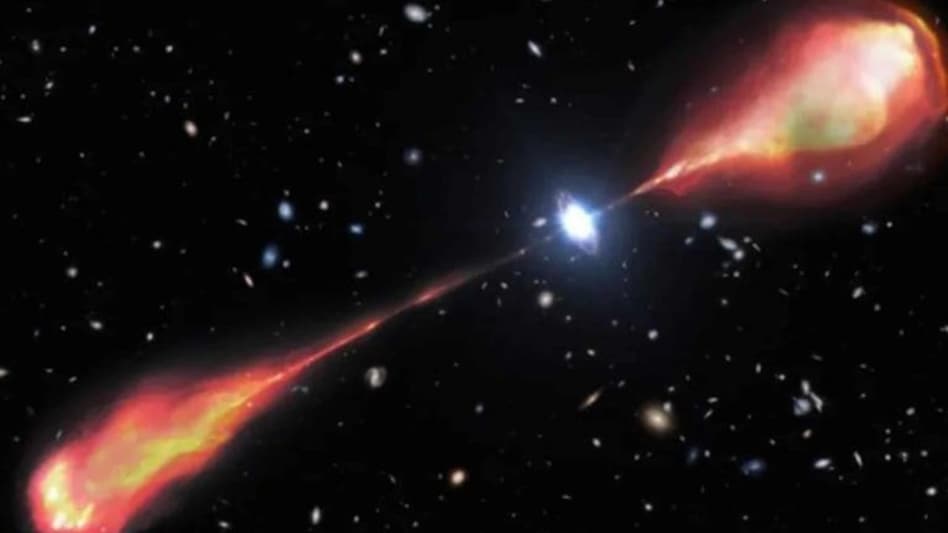 Astronomers typically associate the most powerful jets with the largest black holes, but this find upends that notion.
Astronomers typically associate the most powerful jets with the largest black holes, but this find upends that notion.  Astronomers typically associate the most powerful jets with the largest black holes, but this find upends that notion.
Astronomers typically associate the most powerful jets with the largest black holes, but this find upends that notion. Astronomers have uncovered a massive black hole-powered jet stretching 200,000 light-years — twice the length of the Milky Way. This jet, originating from the quasar J1601+3102, existed when the universe was only 1.2 billion years old, less than 10% of its current age.
Surprisingly, the black hole driving this colossal jet is modest by quasar standards, weighing 450 million times the mass of the sun. This discovery challenges long-held assumptions about the conditions required for such powerful jets to form in the early universe.
Astronomers typically associate the most powerful jets with the largest black holes, but this find upends that notion. Anniek Gloudemans, the team leader and a researcher at NOIRLab, explained, “Interestingly, the quasar powering this massive radio jet does not have an extreme black hole mass compared to other quasars. This seems to indicate that you don’t necessarily need an exceptionally massive black hole or accretion rate to generate such powerful jets in the early universe.”
The discovery suggests that quasar-driven jets were likely more common in the early universe than previously believed. This raises new questions about the role these structures may have played in shaping the formation of the first galaxies.
Not all supermassive black holes generate jets. These jets arise when a black hole actively feeds on large amounts of gas and dust, creating an accretion disk around it. Most of this material spirals inward, but some is ejected by powerful magnetic fields along the black hole’s rotational poles, forming highly collimated jets that travel at nearly the speed of light.
While such jets are well-documented in the modern universe, finding one so early in cosmic history is rare. The discovery of J1601+3102’s jet suggests these phenomena were present and influential far earlier than scientists had expected.
“We were searching for quasars with strong radio jets in the early universe, which helps us understand how and when the first jets are formed and how they impact the evolution of galaxies,” Gloudemans said. “It’s only because this object is so extreme that we can observe it from Earth, even though it’s really far away.”
This discovery supports the idea that many powerful quasars remain undiscovered, waiting to be found by future telescopes.
The detection of J1601+3102’s jet offers a rare glimpse into the nature of early quasars and black hole activity. It raises critical questions:
How common were ultra-powerful black hole jets in the early universe?
Did these jets influence early galaxy formation by regulating star formation?
Why do only some black holes produce such enormous jets?
Further observations are necessary, but the discovery hints that early black holes were more active than previously assumed. Understanding how these jets interacted with their surroundings could offer vital insights into early galaxy growth.
This breakthrough also highlights the impressive capabilities of modern radio astronomy. The success of LOFAR in detecting such a distant jet demonstrates the potential of next-generation telescopes, like the upcoming Square Kilometer Array (SKA), to reveal even more hidden cosmic giants.